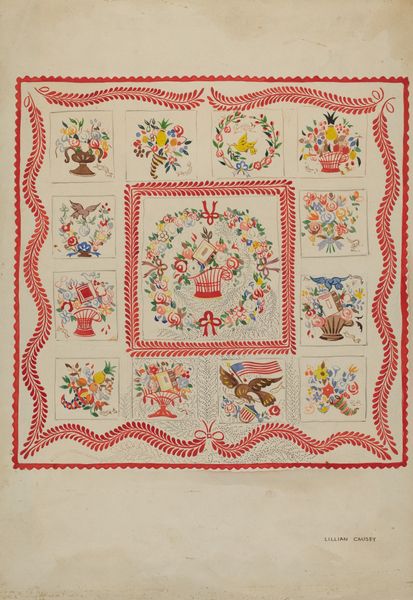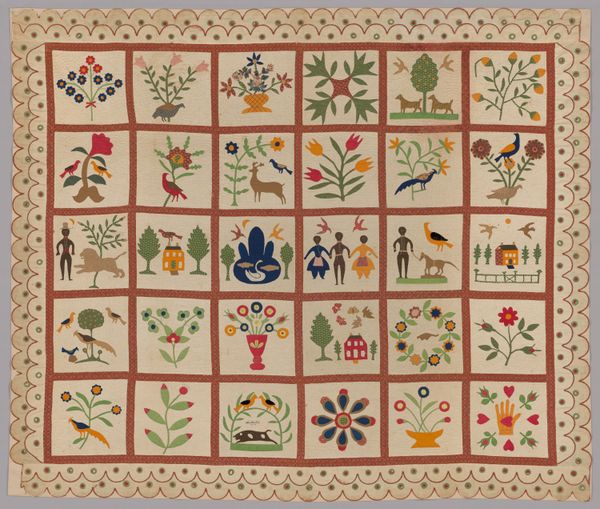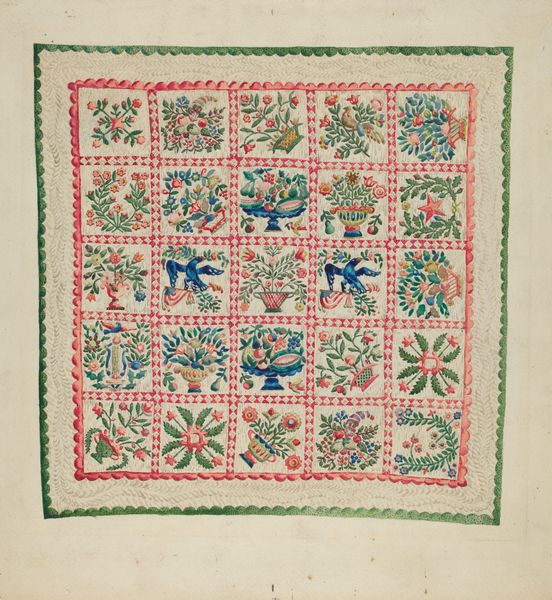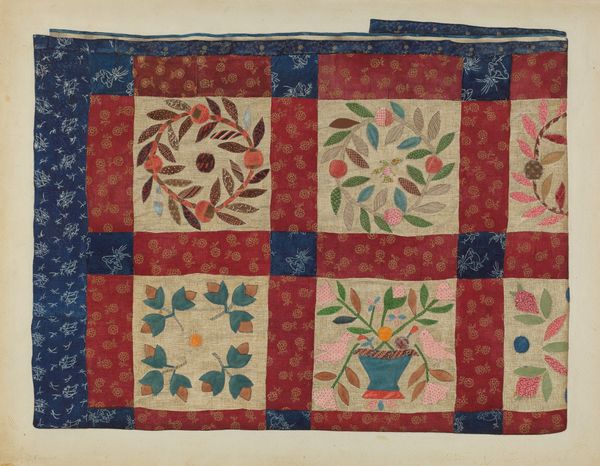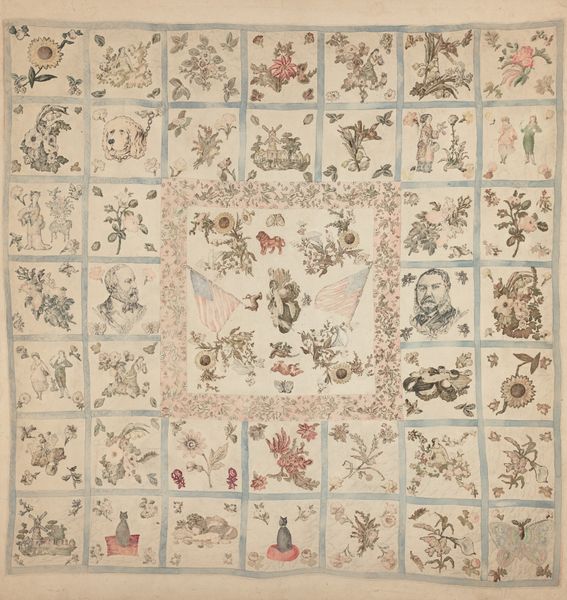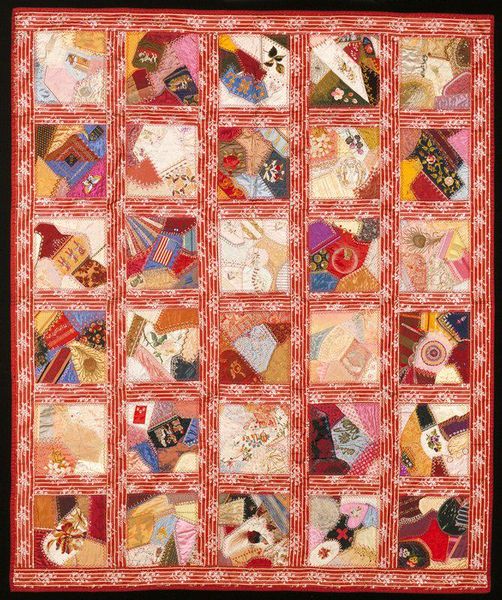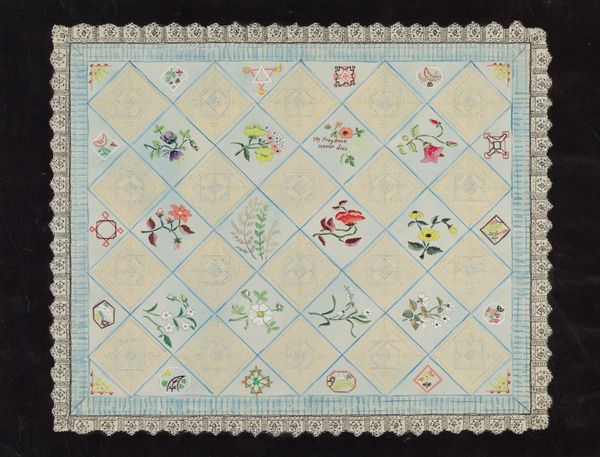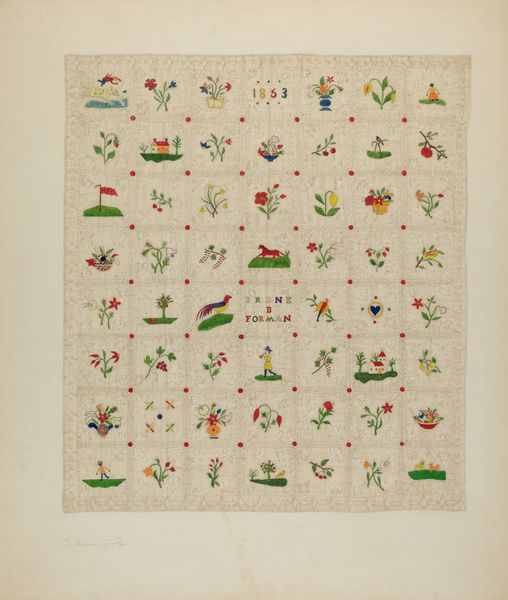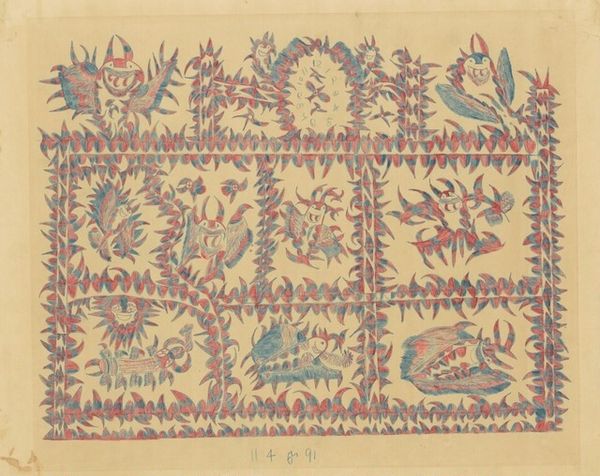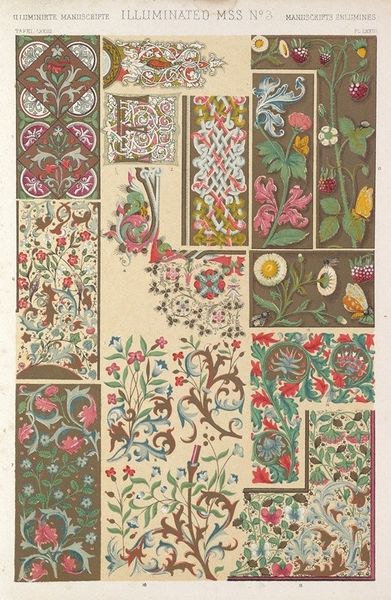
fibre-art, textile
#
fibre-art
#
textile
#
folk-art
Dimensions: overall: 64.8 x 53.6 cm (25 1/2 x 21 1/8 in.) Original IAD Object: 84" long; 60" wide
Copyright: National Gallery of Art: CC0 1.0
Curator: Our attention is drawn today to an Appliqued Quilt crafted between 1935 and 1942. The artist is Dorothea Bates, and it’s an example of textile and fibre art employing a mixed media approach. Editor: My immediate impression is one of intimate storytelling, as if each square is a fragment of memory. The textures are quite delicate. Curator: Indeed. Note the intricate pattern-and-decoration at play; it creates a grid of framed images, each block meticulously adorned. The narrative unfolds visually as folk-art. How do you perceive this narrative? Editor: Well, focusing on materials, each stitch is a labor of love. The varied textiles—probably remnants, scraps, and castoffs – give life to an array of birds, flowers, and folkloric figures. Think about the resources, the time. What does this imply about the maker’s daily existence, their social sphere? Curator: Precisely. Each choice of color and subject serves as a signifier within the quilt's structure, constructing its total meaning. Observe, for instance, the balance created between images from nature. We have various avian figures carefully juxtaposed against verdant plant forms to instill feelings of serene balance and beauty. Editor: The narrative is both homespun and globally informed. The parrot suggests broader cultural influence than small-town folk art would immediately convey. Curator: Consider the surrounding society and the time during which it was assembled, though, and what small joys were attainable in comparison to the hardship experienced in the everyday world. How does this type of production challenge high art and craft distinctions, in your view? Editor: These "lower" art forms have a more personal impact precisely because of that material link with the everyday. Curator: Fascinating, the power of its humble beauty to elevate. Editor: Absolutely. In its worn threads and quiet colors, there are echoes that speak more loudly than bombastic masterpieces, offering us an understanding of how making does, in fact, become thinking.
Comments
No comments
Be the first to comment and join the conversation on the ultimate creative platform.
